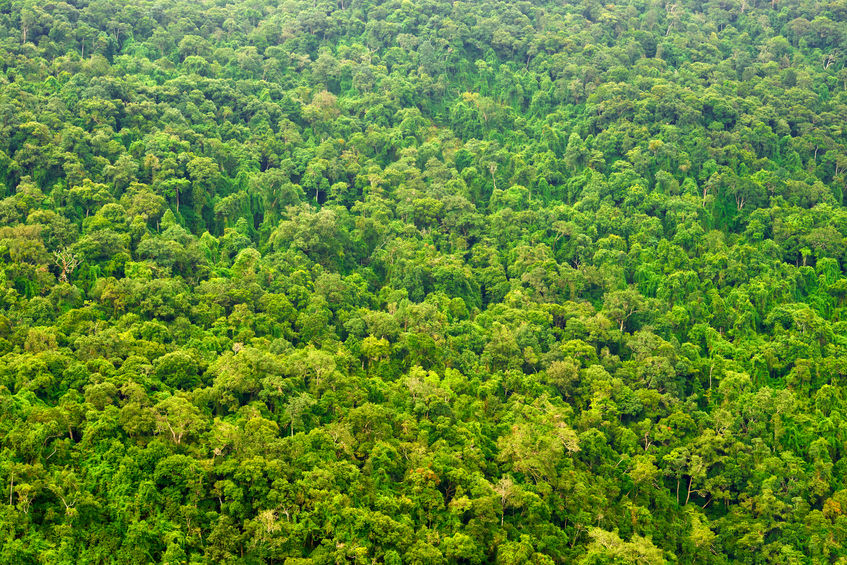A forest is that area which is covered with the trees, plants and animals. Most of the animals are living in the forests and it is important for us to survive. Forests are helpful for human also and can be available in any of the places in whole of the world.
Types of forests
Tropical Evergreen Forests:
Location: The tropical rainforests contain the greatest diversity of species of all biomes on the ground. They are located around the equator, between 23.5 degrees N latitude and 23.5 degrees S latitude.
Climate: Temperatures in tropical rainforests are between 68 and 77 degrees Fahrenheit annually. Winter is missing in these forests. Most tropical rainforests receive 100 inches of rain a day. Year
Soil: Because the temperature is warm and the air is humid, the decomposition is very rapidly occurring in the tropical rainforest. Advanced precipitations often lead to the nutrition of nutrients from the soil, which causes poor food-poor soil.
Plants: Trees in the tropical rainforest grow between 82 and 115 meters high and are typically broad leaves. Other plants include children, vines, mice, palms, and orchids.
Animals: Dense growing trees create a thick canopy of tropical rainforests, which hold the sun to penetrate into the low streets of the forest. This means that most animals living here must adapt to life in the trees. A variety of birds, bats, monkeys, serpents and other animals are found in tropical rainforests.
Threats: We can find the biggest threat to the tropical rainforests was forestry practices.
Temperate Deciduous Forests:
Location: The Eastern United States and Canada, Western Europe and parts of Russia, China, and Japan.
Climate: There are four different seasons in temperate deciduous forests and precipitations fall during the rain during rain, summer and autumn and snow in winter. Temperate deciduous trees receive 30-60 inches of rain. Year
Soil: The soil in these forests is very prolific.
Plants: Forests in moderate deciduous forests support mice, children and wildflowers and support varieties of shrubs and ferns. The trees that dominate this forest are consists of Oaks and birches which are the examples of these forests and a small number of the evergreen forests consists of pines and spruce.
Temperature Coniferous Forests:
Location: Coniferous forests are those forests which presents in the coastal areas with warm winters and heavy storms. For example, the Pacific Northwest of the United States and Canada, Southwest America, Southern Japan, New Zealand and small parts of Northwestern Europe (Ireland, Scotland, Iceland and Norway).
Climate: the warm weather is a low temperature throughout the year. High precipitation levels (50 – 200 inches per year) produce a humid climate and a long period of time.
Soils: soils are usually rich in a thick layer of material deterioration.
Plants: perennial conifers dominate these forests. Due to the high levels of precipitation and moderate temperatures, there is a long-term season due to the high growth tree. The temperatures of pine trees are the most important trees with cedar, cypress, Douglas fir, pine, adventures, and bushes. There are tree leaves, such as maple trees, and mosses and ferns are common.
Animals: examples of animals living in temperate coniferous forests, deer, marmots, hawks, black bears, salmon, white owls, marble marten
Threats: Sustainable forests, road construction, and other development activities pose the greatest threat to the deciduous forest.
Taiga Forests:
Location: This is the type of northern forest that lies between 50 and 60 degrees latitude. The boreal forests are in Canada, North Asia, Siberia and Scandinavia (Denmark, Norway, Sweden, and Finland). Two-thirds of the global indicators were found in Scandinavia.
Climate: Boreal forests are long winters and short summers. Most precipitation is snowy and these forests are annual rainfall ranging from 15 to 40 cm.
Flooring: at low temperatures decomposition takes a long time, because of the fine earth.
Plants: The trees are perennial leaves, such as beef, spruce, and pine. The ground floor is limited because the glass is so compact.
Animals: animals that are here must adapt to cold and cold winters and generally have thicker skins. Deer, elk, holm oak, caribou, snowshoes, wolves, grizzly bears, lynx, and goblins are some examples.





